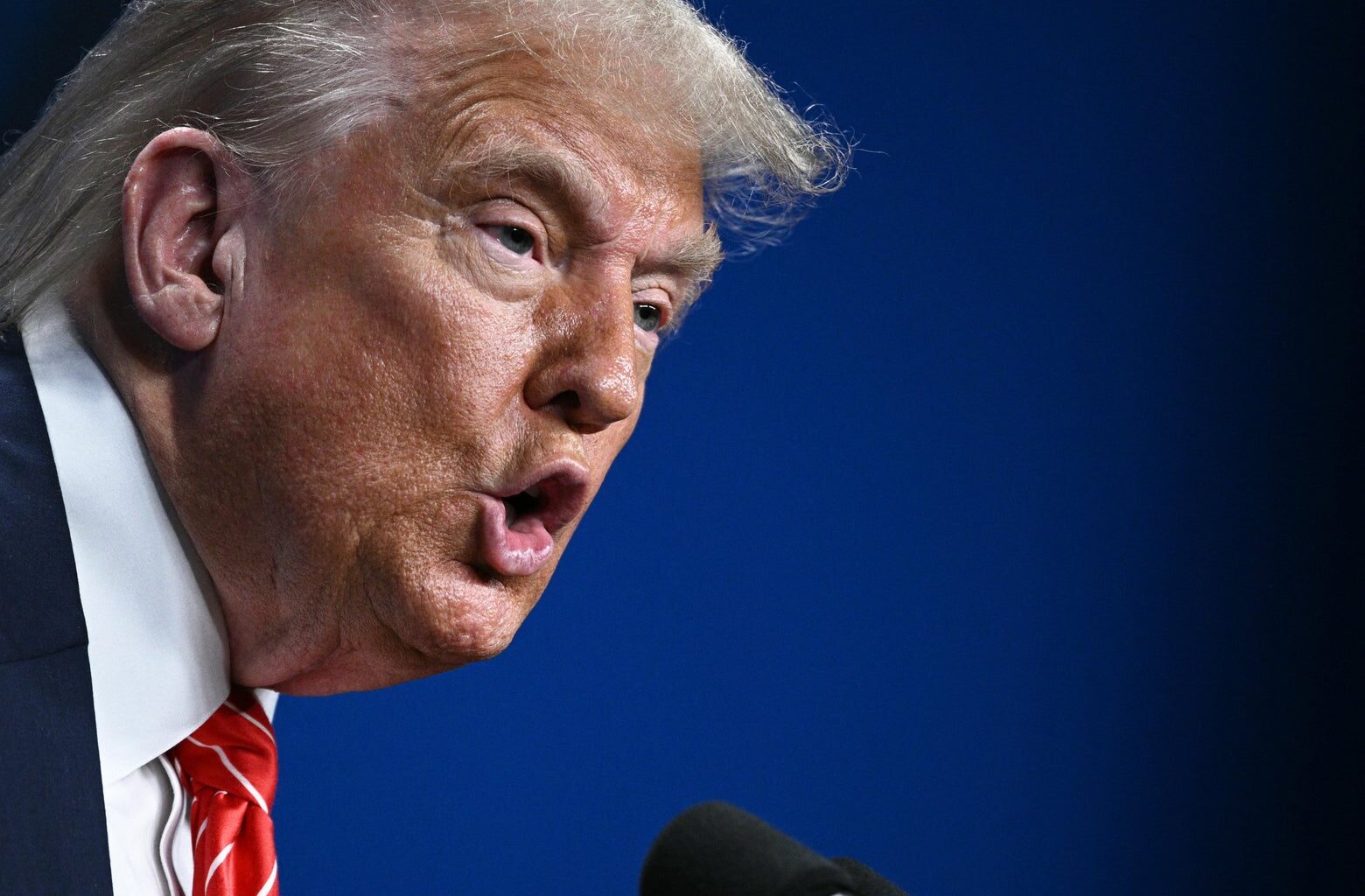Sign up for the Slatest to get the most insightful analysis, criticism, and advice out there, delivered to your inbox daily.
Five days after the U.S. attack on Iran’s nuclear facilities, several mysteries remain: How much damage was done, how much of the program survives, and how long might it take for Iran to rebuild what was destroyed?
Based on interviews with specialists on Wednesday and a Pentagon news conference Thursday morning, three things are clear.
First, from a strictly operational viewpoint, the attack was even more remarkably precise and professional than early reports suggested.
Second, the damage done to Iran’s program was likely more extensive—and recovery will take longer—than a Defense Intelligence Agency report, which was leaked to the press on Tuesday, suggested. As the press accounts (including mine in Slate) noted at the time, the report was an “initial” assessment. Less noted was the fact that its findings, in the DIA’s own words, were of “low confidence” (meaning that the intel analysts’ confidence in the report was less than 50 percent).
Third, much of the misunderstanding about the operation stemmed from the baseless hype perpetrated by President Donald Trump and Secretary of Defense Pete Hegseth a few hours—in Trump’s case, just minutes—after the bombs exploded.
The hype and distortions continued at Thursday’s news conference. Gen. Dan Caine, chairman of the Joint Chiefs of Staff, delivered a straightforward, nonsensational presentation, outlining new details about the attack and the history of its weaponry, mainly the bunker-busting bombs—the Massive Ordnance Penetrator (aka GBU-57)—that were dropped on Iran’s mountain-buried enriched uranium site at Fordo. However, Hegseth used the occasion to slam the “fake news media,” whose “hatred of Trump” inspired their “fawning coverage” of the DIA report, which they “cheered” as confirmation of Trump’s failure.
Hegseth can’t be entirely faulted for this outburst. Trump hired the former Fox News host to be his attack dog, and he growled with gusto at the assembled Pentagon press corps (hardly a pack of radicals, by the way), all but accusing them of treason for “undermining the success of our incredible pilots” and the other warriors in “the most complex and successful military operation in history.”
The last bit was the giveaway. Operation Midnight Hammer (the attack’s code name) was certainly impressive (as all the press accounts acknowledged), but it’s hardly the most impressive ever. Hegseth diminishes his already-tarnished credibility by indulging in such hyperbole. Not that he cares. He was performing for an audience of one—Trump, watching the show on TV in the White House, no doubt with glee—but at some point, during some crisis, he might need to convince a larger segment of the American people. Meanwhile, he ignores the fact that he and Trump are largely responsible for the press corps’ premature embrace of the DIA report.
On Saturday night, not long after the B-2s dropped their bombs and sped out of Iranian airspace, Trump proclaimed to a worldwide TV audience that the attack had “completely and totally obliterated” Iran’s nuclear program. The next morning, Hegseth repeated the boast.
Words have meaning, and words (like obliterated) modified by redundant adjectives (like completely and totally) should be reserved, if at all, only for definitive pronouncements. By this measure, Trump’s and Hegseth’s pronouncements were inherently false. That is, even if they had turned out to be true (which they have not), there was no way for anyone to know—so soon after the attack, in the darkness of night (it was about 2 a.m. in Iran)—anything about the attack.
Therefore, when someone leaked the DIA report that the core elements inside Fordo might not have been destroyed and that Iran might repair the damage in a matter of weeks, it was only natural for journalists to publish what seemed to be a corrective to the president’s blithe certainty. (It’s noteworthy that most if not all the coverage stressed that this was an initial assessment—though, in fairness, not every outlet explained what that designation meant.)
If Hegseth wants to be angry, he should aim his fire at the DIA for drawing conclusions, especially about the recovery time, that go beyond an initial assessment—and at the report’s leaker, who may indeed have been motivated by a desire to puncture Trump’s moment of triumph. (The president has launched a leak investigation.)
It’s also worth noting that the administration is having a hard time getting its message out on the attack because Trump’s top civilian officials dealing with security and intelligence—Hegseth, Director of National Intelligence Tulsi Gabbard, and CIA Director John Ratcliffe—came to their jobs with clear records of placing loyalty to Trump over “speaking truth to power.”
And now Trump is reaping what he sowed. He is furious about news reports of the DIA assessment and ordered Hegseth and Caine to hold another 8 a.m. news conference—the second this week—to “fight for the Dignity of our Great American Pilots” and to denounce the media (“They’re bad people, they’re sick … scum”) for trying “to make this unbelievable victory into something else.”
By turning the episode into a titanic clash of good (Trump and brave pilots) vs. evil (the media and leakers), the president and his top aides (except for Caine, who has turned out to be more of a straight shooter than many—very much including Trump—expected when he was nominated in February) are passing up a chance to explain, clearly and calmly, what we know and don’t know about the attack. And, in any case, that attack seems to have been more effective than summaries of the DIA report suggest.
Based on Caine’s briefing, some independent analyses of satellite imagery, and my own interviews with two specialists, including a former intelligence officer who has taken part in bomb damage assessments, the following can be fairly surmised:
First, about that DIA report. It was an internal initial assessment, based on the BDA’s first phase, which generally doesn’t go much beyond how precisely the bombs hit their intended targets. The second phase assesses the physical effects of the explosions. The third assesses the effects on the targets and the “system of targets”—in this case, how much damage was inflicted on Iran’s ability to enrich uranium and build atomic weapons. The former intelligence officer told me it would probably take a few weeks—maybe months—for even an accelerated high-priority BDA to reach final conclusions.
To the extent the initial assessment drew estimates about Iran’s recovery time, it probably overstepped its boundaries. Still, even Trump has since acknowledged that the report wasn’t entirely wrong. “The intelligence was very inconclusive,” he told reporters at the NATO summit on Wednesday. “The intelligence says, ‘We don’t know, it could have been very severe.’ ” Trump added, in a rare moment of reflection. “The original word that I used—I guess it got us in trouble because it’s a strong word—it was obliteration.” He then noted that Israeli intelligence will conclude in its report that “it was total obliteration.”
Second, what is now known, from the BDA’s second phase (which presumably wrapped up in just the past day or so), is that the attack probably inflicted major damage on the Fordo site, not just on the surface but way down into the chamber. According to a report by the Israeli atomic energy agency, which the Trump White House released before Israel did, the attack most likely rendered the Fordo facility “inoperable.”
Inoperable—it’s a carefully chosen word. It suggests that the centrifuges (the paddles that enrich uranium when spinning at high speeds) might not have been destroyed but that the blast waves from the bombs, as powerful as a major earthquake, could have damaged them beyond repair.
Between the U.S. attacks on three major nuclear targets—Fordo, the uranium enrichment facility at Natanz, and a uranium-storage site at Isfahan—and Israel’s previous airstrikes, it’s possible that nearly all of Iran’s centrifuges have been seriously damaged or destroyed.
Still, questions remain—and they likely won’t be answered until after the third phase of BDA, if then.

Fred Kaplan
Trump’s Celebrating an Iran Ceasefire. There’s a Bigger Danger Lurking.
Read More
First, how much enriched uranium does Iran still have? There were reports, quite separate from the DIA assessment, that Iranians removed much or all of the uranium from Fordo in the days leading up to the American attack, which they anticipated. Commercial satellite imagery showed 12 trucks pulled up to Fordo. Were they there to cart away uranium or to pile concrete on top of the site’s air and exhaust shafts? (Caine said that the first bomb dropped by a B-2 blew up this cover. Subsequent bombs plunged straight through the shafts at a speed of 100 feet per second.)
This Supreme Court Decision Is Devastating—and an Ominous Sign of Things to Come
It Was One of the Most Haunting Cases of 1990s America. It’s Been Completely Forgotten. It Shouldn’t Be.
The Supreme Court Just Revived One of the Worst Anti-Woman Rulings of All Time
One of Trump’s Most Deranged Backers Lost His Defamation Trial. He’s Declaring Victory.
Even Vice President J.D. Vance has acknowledged that U.S. intelligence does not know where Iran’s enriched uranium might be. Hegseth was asked at Thursday’s news conference whether uranium had been removed from Fordo. He evaded the question.
It is also unclear whether Iran had the ability to convert the highly enriched uranium into a weapon. Marco Rubio, the secretary of state and national security adviser, said Wednesday that the attack on Isfahan had destroyed the conversion machinery, without which Iran cannot make a bomb even if it still had some enriched uranium.
However, Isfahan has been described in the past as a uranium storage site. One former official said he doubts that Iran would store enriched uranium and the machinery needed to weaponize the uranium in the same place. It is also unknown how far along Iran’s conversion program was—and, if there is a conversion program, whether there are sites secretly deployed elsewhere.
Donald Rumsfeld once said, in one of his more sage remarks, “There are knowns, known unknowns, and unknown unknowns.” There are still plenty of all three in this tale, and there are likely to be for a while. It would be best if, from now on, Caine gave all the news conferences on the topic.

